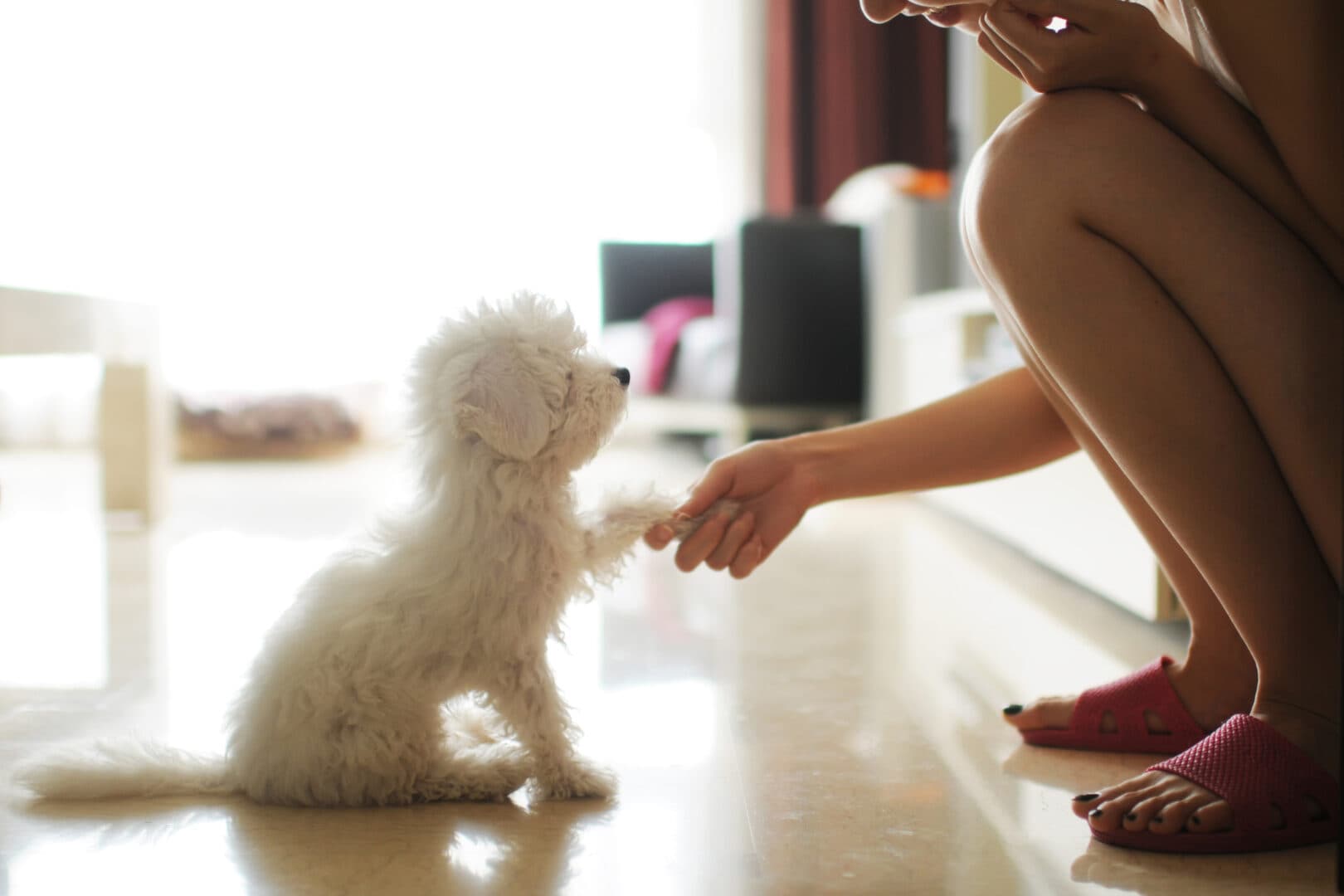Does your dog hide behind you at the park when other dogs approach? Does your pup bark in fear when new people visit your home? If so, you face a difficult challenge. Though you want to make sure that your pet is comfortable, you don’t want their nervous tendencies to prevent them from being exposed to new and exciting human and dog friends.
Here are 11 tips on how to introduce dogs to new people and other dogs:
Expert tips on how to introduce dogs to new people
Introducing a shy or fearful dog to new people should be “a slow process,” says Donna Rose Whitney, owner and head trainer at Tailwaggers Dog Training in Fairfield, Maine. Here are five tips on how to introduce dogs to new people in a comfortable, non-threatening way.
1. Confine your dog to a separate room until everyone has settled in
If you’re having a new person come over to your home, you should keep your dog confined until everyone is settled in and sitting down, says Dr. Jessica Gramlich, a veterinarian.
2. Let your dog make the first move
You should never allow the new person to approach, speak to or touch your dog until your pet makes the first move to signal that this type of contact is acceptable, says Whitney.
3. Ask the new person to offer treats to your dog
Without making eye contact with your dog, the new person should hold out dog treats or drop them on the floor nearby. During this process, the new person should stand sideways or in a crouching position.
4. Do not reward your dog if they continue to show fear or shyness
Whitney points out that if you reward your dog for continuing to show fear or shyness, you will only delay their progress and increase the likelihood that they will continue to engage in this unwanted behavior.
5. Be patient
If your dog finds the offered treats to be desirable, they will eventually feel confident enough to approach the new person, but it may take a while. You should never rush this process because that may only worsen your dog’s feelings of fear or shyness.
“The critical socialization period for puppies is between 3 and 12 weeks of age.”
— Dr. Jessica Gramlich, veterinarian
How to introduce dogs to other dogs
You can help your dog feel comfortable with meeting other animals by starting out with “positive reinforcement, counter-conditioning and training with a known friendly, calm dog,” says Gramlich. Here are six tips on how to properly introduce your dog to a potential canine friend.
6. Start in a calm, neutral environment
Make sure that you begin this process in a controlled environment that has little to stimulate or distract your dog.
7. Use a familiar, well-behaved dog
According to Whitney and Gramlich, you should start by introducing your pet to a confident, well-socialized dog, as this will help you learn how to handle these types of introductions.
8. Go slowly at first
When making this initial introduction, make sure that both dogs are properly leashed. Keep your distance from the other dog and their handler at first, and reward your dog for calm behavior. Then, approach the new dog slowly. When the dogs eventually meet up, you can allow them to sniff and circle around each other. Afterward, you should walk away with your dog.
9. Use plenty of positive reinforcement
Throughout this introduction process, you should reward your dog when they display confident behavior, as this will encourage a positive association with meeting new dogs.
10. Never use tight leashes or pull the dogs apart
According to Whitney, using tight leashes or pulling dogs apart can cause a negative reaction in your pet.
11. Repeat the process as many times as necessary
Depending on just how shy or fearful your dog is, you may have to repeat this process several times for them to feel truly confident around other dogs. Once they are able to build up this confidence, you both will feel more comfortable and relaxed on your outings.
Why some dogs have a harder time meeting new people and pets
It’s difficult to know what causes one dog to feel more fearful of certain dogs or people than others, but both Whitney and Gramlich state that early, positive socialization is key for confident, well-behaved pets. “The critical socialization period for puppies is between 3 and 12 weeks of age,” says Gramlich.
“It is important during this critical socialization period to expose your puppy to people (children, males and females, people in uniform and men with beards and hats), other dogs (friendly, big and small), other animals (cats and pocket pets, if you have them) and environments (grass, concrete and water) in a positive way. When puppies have adverse experiences, they may develop a phobia later on in life that can be very difficult to manage.”
By following these tips and best practices, you can help your dog to overcome their fear and live a happy, confident life.



